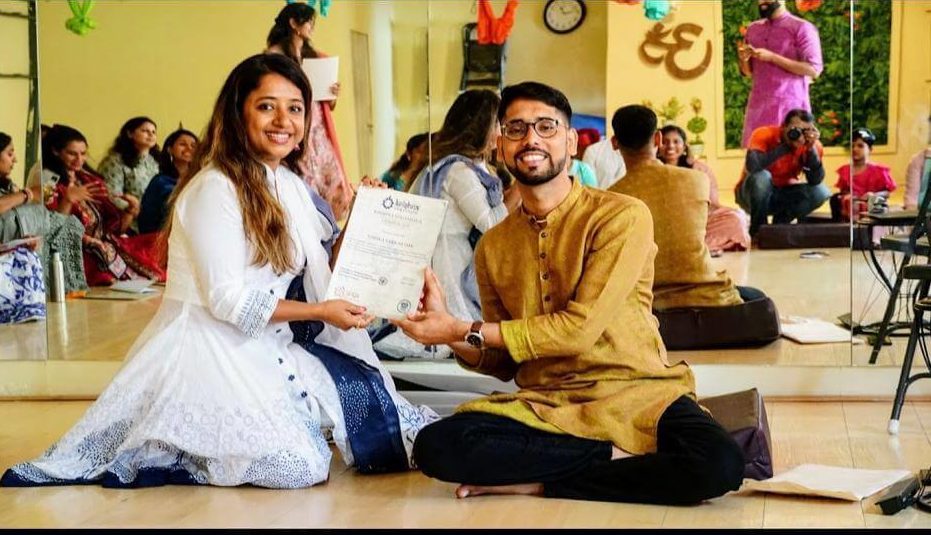Sarika shares her voyages within and without, mapping what Yamas, Niyamas and Ahimsa did to her – exclusively for Different Truths.
We are all the same, yet different. Our journeys are different, our wants are other, and our success is measured in various parameters, so it is different too.
Each of us begins the journey with yoga for different reasons. For many, yoga is related to weight loss, inches loss, advanced asanas, and more. Ancient yogis practice yoga in connection with flexibility, strength, power of the mind, self-consciousness, and beyond. Yogi’s life encompasses practising Yamas and Niyamas.
The Yamas
In my yoga training journey, I opted to stick to the art of Ahimsa (non-violence) – the first Yama of the Patanjali sutra. This means refraining from the intention of causing physical and psychological pain to any living being and conscious compassion in every aspect of daily life. Ahimsa not only says no to war and killing but also connects with our family, friends, colleagues, and neighbours; the way we drive, earn, live, spend, the kind of food we eat, and our relationship with the environment. We treat animals, the environment, and how we view politics, education, and business. It’s a holistic approach.
Ahimsa
How can I practice Ahimsa in my everyday life?
1. Eat a healthy and plant-based vegetarian diet-our body is precious, so keep it healthy. To nourish and love our body fully, we should know and understand what we are eating and from where it comes. Nourish the body with fresh, healthy, nutritious, wholesome, organic, plant-based foods. Treat the body as a holy place that does not thrive on unhealthy or junk food and the deaths of other creatures.
2. Cultivate the seeds of positive and loving thoughts. Love, hug, and be kind. I Practice forgiving myself. I give genuine compliments to others. I don’t discuss others.
I control my emotions and anger and learn how to deal with them.
3. Trying to become a calm driver. Driving aggressively or getting angry with another’s aggressive drive accounts negatively for Ahimsa; I am trying.
4. I care for Mother Earth and the ecosystem. Taking staircases instead of elevators; walking and riding bikes instead of using a car. And carpooling whenever possible — bringing cloth or reusable plastic bags whenever you go grocery shopping. Supporting local businesses and shopping at the local farmers’ markets or produce shops. I am switching to natural products to minimise harmful chemicals, minimise paper products, and use recyclable containers.
- Planting trees
- Composting our food scraps
- I choose cotton clothes.
- Going on a technology fast once or twice a month
5. Let it go – I learned to let go of attitude and start feeling more at peace with myself.
6. Practice Meditation: I find peace in daily meditation, which has helped me tremendously. When I observe negative self-talk occupying my mind, I replace it with my meditation.

The Niyamas
- It gives us the support we need as we face difficulties in our lives.
- By following these principles, we have the opportunity to live a better life.
- We spend months and years believing that when that happens, we will finally be happy.
- We don’t appreciate the little victories because we are already projected to the next goal.
- During my teachers’ training journey, I consciously focused on contentment or Santosha. However, I have been following for the past few years.
- The practices of Santosha can be broken down into different categories, but they will still all be aligned with the basic idea of appreciating whatever we have. Practising Santosha is difficult. And it needs a lot of conscious effort.
Following ways, I keep my self-contentment:
Be thankful: To be grateful for whatever I have in terms of physical health, financial possessions, relationships, emotional interactions, and intellectual abilities.
Appreciate nature: I understand the natural resources of the earth and the value of other living beings.
Contribute more: I contribute my bit to society. I am mostly inclined toward children’s safety and education.
Live in the present: To appreciate what you have, you must focus on the present. It is tough, but I am reaching where I suppose to be.
Make a gratitude list: I usually note down everything in my life for which I feel gratitude.
Involve in nature interactions: Nature is too vast and extensive, but I try to save them in the minimum way possible – saying no to plastics and nurturing plants and pets.
Practice Santosha on the mat: I learned to respect my body and abilities; however, I aim high and work hard.
Initially, following Yama and Niyama was a bit challenging. Later, it becomes part of life.
It’s been three months since I became a certified yoga trainer, and I am doing my bit for society.
And I adopted yoga for a lifetime.

Photos by the author and Krishna Yogashala





 By
By
 By
By
 By
By